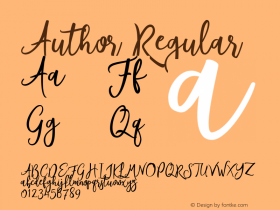

Estereográfica Editorial. License: All Rights Reserved.
New cover for the Brazilian edition, designed by Rafael Dietzsch and André Maya, using Fred's custom 'counterpunch' font and Haultin, both tailored for this edition.
Fred Smeijers'Haultin, a typeface designed by the author and first used for the editions of this title (so far, in English, French and now in Portuguese). The book was translated by Gustavo Ferreira, a Brazilian typeface designer and developer who attended the Type and Media program in The Hague (where he first met the author) and designed some custom typefaces for OurType's website.
In the appendices to the book, the author comments on the development of this typeface, comparing it with the design process of Renard, the typeface used in the first edition:
Some may consider this Haultin typeface to be a revival, but I would question that. With Renard there were punches, matrices, and printed material available. With Haultin there are no punches left; there are some matrices, and there is printed material. But still you cannot call it a revival, because of the small size of the model. Renard, for example, was based on a letter with an x-height a little smaller than 7 millimetres: you can have a proper look at that. For Haultin I mainly looked at the matrices of the Coronelle Romaine and the Nonpareille Romaine (approximately 6.5 and 5.8 points). These are small sizes, but at least they give you a clear look at proportions. The ragged images found in the matrices are helpful but hardly represent how the letters came to us – deformed, or actually in this case touched up, by the printing process. Switching between the fixed image found in the matrices and the variety of images found in the printed result, the balance shifted in the end clearly towards the printed images.
The margin for interpretation in a case like this is great. It is so large that, no matter who has done it, such a piece of work can only be called a personal interpretation.
We tried to keep the overall design concept and appearance of the British edition, designed by Corina Cotorobai. Some small modifications had to be made, because the Portuguese text runs longer than the English. Also, the chosen paper is a bit more yellow and has a rougher texture when compared with Hyphen's edition. This is mostly due to the scanty options available in Brazil.

Estereográfica Editorial. License: All Rights Reserved.
Examples of type measurement.

Estereográfica Editorial. License: All Rights Reserved.
Examples of equal negatives shapes in different words.

Estereográfica Editorial. License: All Rights Reserved.
A short bio about Haultin, his work, and the Haultin family that that was first shown in the second edition of the book, published by Hyphen Press.

Estereográfica Editorial. License: All Rights Reserved.
Details of the binding.

Estereográfica Editorial. License: All Rights Reserved.
Examples of lettering by W.A. Dwiggins, Imre Reiner, and Jonathan Hoefler; a typeface cut by Hendrik van den Keere.

Estereográfica Editorial. License: All Rights Reserved.
Samples of engravings for the Romain du Roi by Rochefort.

Estereográfica Editorial. License: All Rights Reserved.
Comparing specimens of typefaces of different size, cast with the same body.

Estereográfica Editorial. License: All Rights Reserved.

Estereográfica Editorial. License: All Rights Reserved.
Sketches for a set of counterpunches.

Estereográfica Editorial. License: All Rights Reserved.
Sample of a typeface for large sizes, cut by Hendrik van den Keere.

Estereográfica Editorial. License: All Rights Reserved.
A description of Renard (TEFF) by Fred Smeijers, the typeface used for the first edition of the book.







